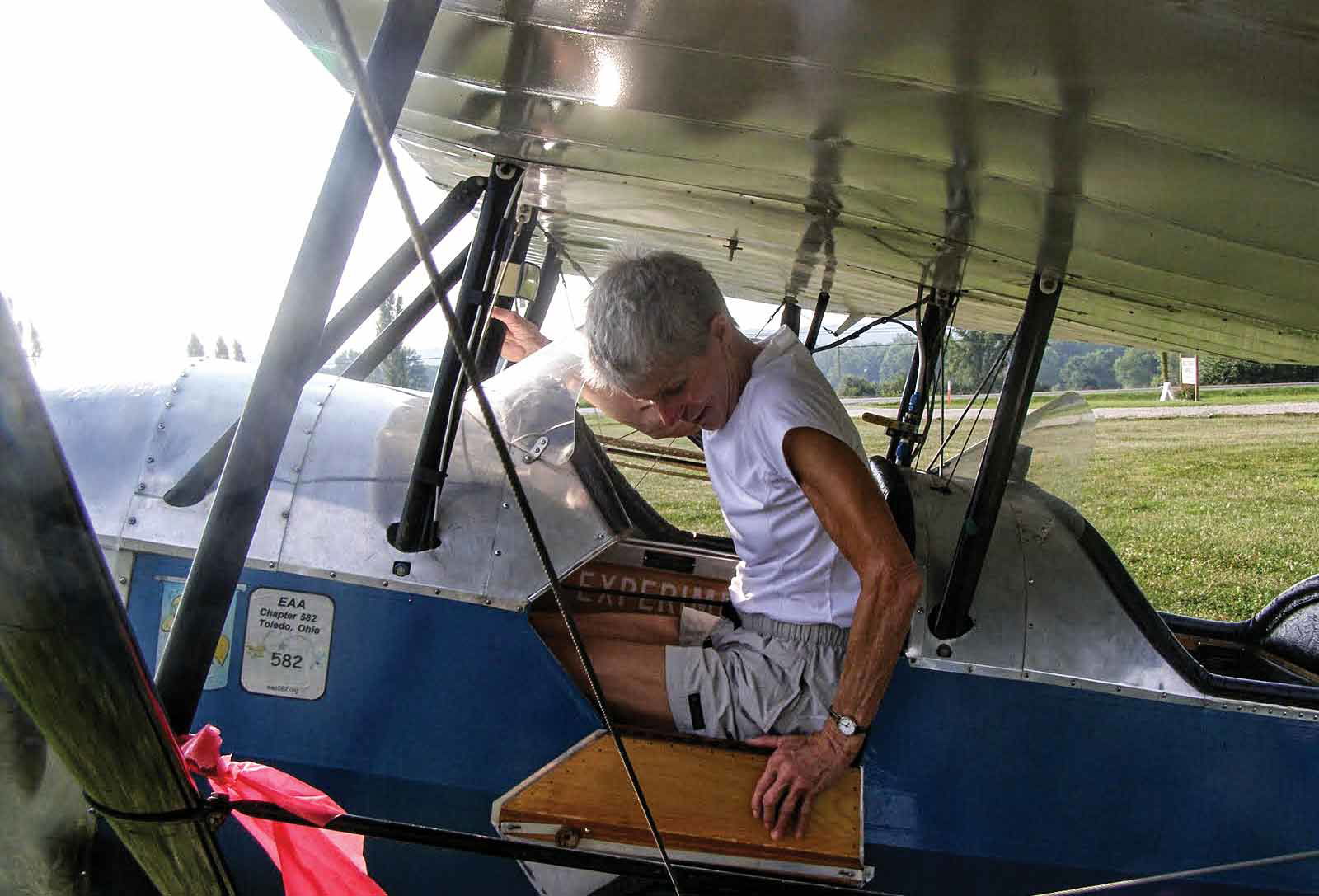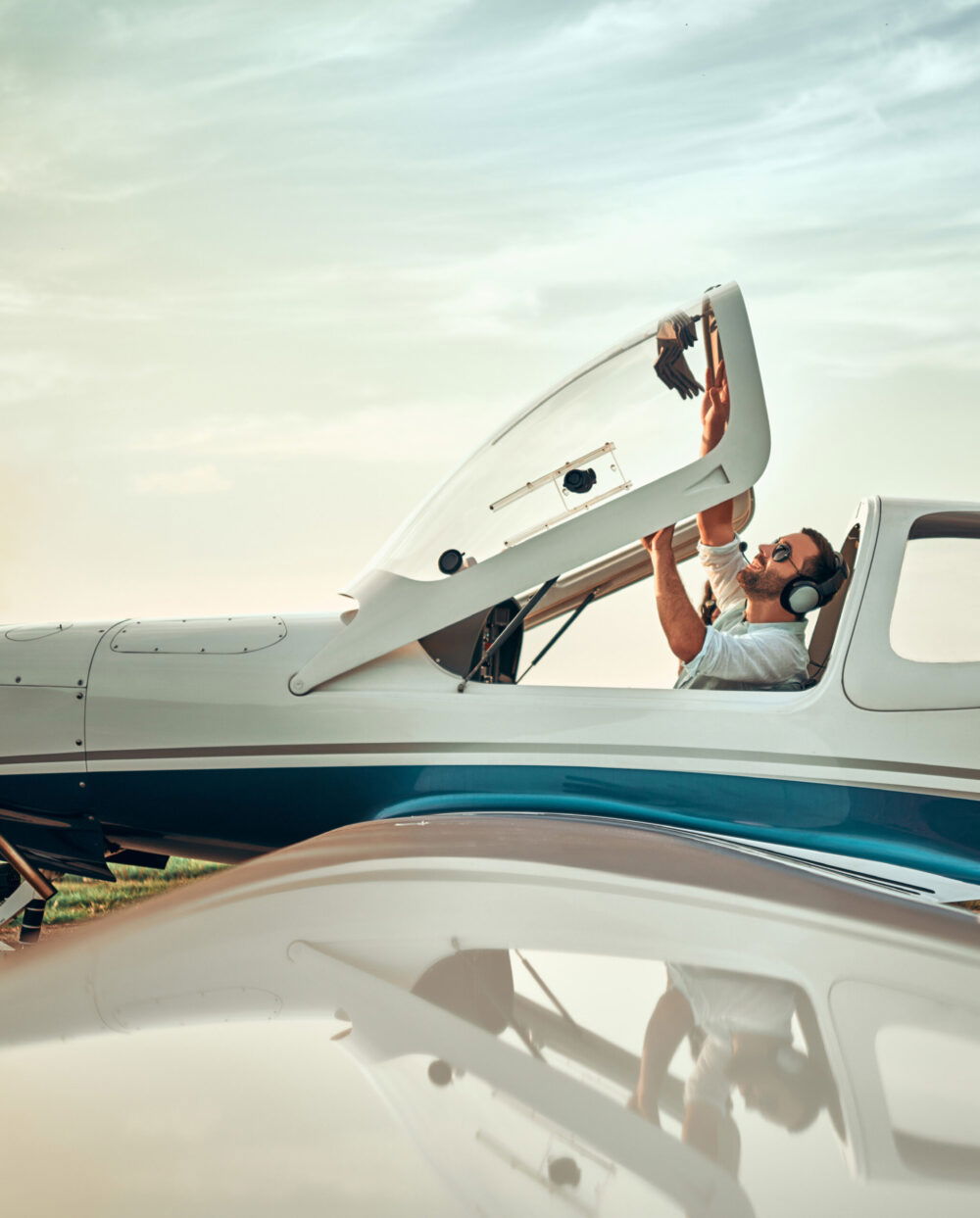The weather was great last week, but it’s morel season so I was searching in a beautiful woods on Doc Terrell’s property in Highland County, Ohio. One of the few reasons to sacrifice a good flying day is to hunt the magical sponge mushrooms that peek up every year in spring. There are people who claim you have to be something of a witch to find them — yeah, I usually find them.
But deciding between flying and mushrooming this year was a no-brainer since ’72B is down with three — yes, three — bad cylinders. I tried shrugging it off, maintaining that’s why we practice forced landings, but my mechanic didn’t see the logic. So I own three new cylinders and I’m on a diet of mushrooms and bologna.
Anyway, a day in the woods is good for reflection. Instead of obsessing about my bank account, I was thinking about this privilege we have of flying, of being pilots. I’d given a flight review a few days before, and it was an experience that left me disappointed and even a little angry.
I agreed to fly with this nice guy, a longtime private pilot who owns half of a Cessna 182. He didn’t have an instrument rating, so I planned the review around airspace (we’re under a Class B), VFR navigation and operations at towered and nontowered airports.
He assured me the old 182 had updated radios and was in great shape — fresh out of annual. Well, OK, there was some “new” stuff: two navcoms, one barely usable because the LED was dying; a very large loran receiver, obsolete about eight years ago; a portable Garmin 295 — with a database limited to the 13 original states — an ADF head but no receiver; and a dusty autopilot that didn’t work. There were holes of various sizes and shapes in the panel but no “inop” placards on the missing or inoperative equipment. So much for the annual. When he asked what I thought about the shop he used I uncharacteristically bit my tongue and said I couldn’t comment.
Because he flew only “occasionally and locally,” or with his partner, who had an iPad, he said he wasn’t familiar with anything but the navcoms. Then he asked me how cowl flaps work and said he always flew with them open because he didn’t understand what they did — probably a wise move since the cylinder-head temp gauge was also inop. When I asked about their plans for ADS-B equipment I got a blank stare. He wanted me to “fill [him] in on all the new stuff happening with general aviation.” My blood pressure was rising, but I reminded myself this was a flight review and not a practical test, he’s a VFR private pilot and I’m a plain-vanilla CFI. And at least the basic required paperwork was on board.
After over an hour on the ground, I said, “Just take me to XYZ Airport.” The weather was clear, and he seemed to be familiar with the nontowered field about 30 miles up the road with one runway, an AWOS and a nonstandard traffic pattern. “Oh, and use whatever nav method you want,” I told him.
He pulled out a wrinkled terminal area chart that had expired sometime early in the millennium. Then he eyed the direction, fired up the airplane and did a decent job of talking, taxiing and taking off.
Using prominent landmarks, he spotted the airport about 6 miles out and made a beeline for it at our “cruise” altitude of 2,000 feet msl, which is the field’s traffic pattern altitude. We were still on the Lunken Tower frequency, so my head was swiveling wildly; it’s distinctly uncomfortable to be over the middle of an airport at pattern altitude with no AWOS or CTAF contact. The winds were light, so I knew there could be traffic in either direction on the single runway. I rather strongly suggested we “get the heck out of here.”
“Why?”
“How about getting the AWOS, deciding on a runway, calling local traffic and having some plan for your pattern entry, which could be nonstandard?”

So we motored off to the north and he tried tuning in the AWOS but got nothing because the frequency shown on the chart had changed — a long, long time ago. I tuned in the correct one from memory and then he tried for the CTAF but, again, struck out. He was unfamiliar with 25 kHz spacing and didn’t know how to pull out the small tuning knob on the KX 155 to get “.025.”
The landing was long and my blood pressure had risen to alarming heights, so I suggested we taxi back, take off and head home. The approach and landing at Lunken were OK, so when we were parked and shut down I said I’d sign the time as dual instruction but I couldn’t endorse the flight review. He badly needed instruction, study and practice, and I’d try to recommend a good local CFI. Gritting my teeth, I said if he was willing to put forth the effort, I’d work with him.
I was amazed when he indicated he wasn’t too interested and said he’d “have to think about it.”
No, I wasn’t amazed, I was appalled.
Flying is a privilege, and while we all fall short of perfection, we try. We read and talk and practice. We try to keep abreast of the latest in weather, technologies, communications procedures, airport signage, regulations and airspace. We practice approaches and short-field landings and steep turns and simulated forced landings and navigation. We critique our flights mercilessly, and we’re our own worst critics. And if we’re lucky enough to own an airplane, we damned well know how to use what’s installed, whether it’s a Superhomer or a G1000.
So I told this pilot he should probably limit his flying to cocktail-party chatter or trading war stories with guys around the airport. If he couldn’t or didn’t want to put forth the effort to be proficient, he had no business flying. He acknowledged his lack of proficiency, and I asked myself if I was being too harsh. Maybe it wasn’t that big a deal if he was going to stay in the local traffic pattern; maybe money was an issue and he couldn’t afford to fly the airplane much. But by endorsing a flight review I’m certifying the pilot can fly wherever he wants — alone or with passengers. So it was painful, but I was able to sleep that night.
I’d been reluctant to offer giving him dual. I don’t instruct much unless it’s somebody who’s having a particular problem or wants to do something esoteric like NDB approaches or learn how to make really good crosswind landings in a taildragger. It’s a joy to share tips and tricks I learned from friends, stuff I taught myself (the hard way) and lessons I learned from years with the FAA. But a long time ago I ran out of the patience for basic flight instruction. Anyway, at heart I’m a steam-gauge girl (only a dinosaur would teach NDB approaches). With enough cursing I can push, touch and twist the right stuff on a G1000; I work at it, but I’m far less skilled than you guys who grew up with glass. Heck, I still carry a book of “papyrus” approach plates when I punch holes in the clouds.
Staying on top of the newest avionics when I gave practical tests used to be a concern, but now that I’m defrocked the heat is off. I won’t be putting glass in the 180, so I’ve stopped fretting and concentrate on staying current, qualified and comfortable with my Garmin 430, a 696 with satellite weather and, when I remember it, my iPad. With no autopilot in the 180, buying anything more exotic than a heading bug doesn’t make much sense.
Taking pride in being a proficient pilot and striving to be better didn’t mean much to this man, and I find that very sad. Flying airplanes — flying them well — is more than important, it’s sacred, and he’s missing out on so much.


